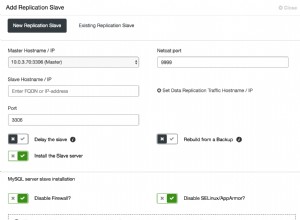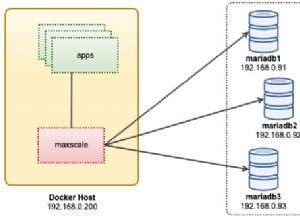Questo è facile da fare con pg-promise:
function buildTree(t) {
const v = q => t.any('SELECT id, value FROM votes WHERE question_id = $1', q.id)
.then(votes => {
q.votes = votes;
return q;
});
return t.map('SELECT * FROM questions', undefined, v).then(a => t.batch(a));
}
db.task(buildTree)
.then(data => {
console.log(data); // your data tree
})
.catch(error => {
console.log(error);
});
Come sopra, ma usando ES7 async /await sintassi:
await db.task(async t => {
const questions = await t.any('SELECT * FROM questions');
for(const q of questions) {
q.votes = await t.any('SELECT id, value FROM votes WHERE question_id = $1', [q.id]);
}
return questions;
});
// method "task" resolves with the correct data tree
API:mappa, qualsiasi, attività, batch
Domande correlate:
- Prendi un albero genitori + figli con pg-promise
- Attività condizionale con pg-promise
E se vuoi usare solo una singola query, usando PostgreSQL 9.4 e versioni successive puoi fare quanto segue:
SELECT json_build_object('id', q.id, 'content', q.content, 'votes',
(SELECT json_agg(json_build_object('id', v.id, 'value', v.value))
FROM votes v WHERE q.id = v.question_id))
FROM questions q
E poi il tuo esempio di pg-promise sarebbe:
const query =
`SELECT json_build_object('id', q.id, 'content', q.content, 'votes',
(SELECT json_agg(json_build_object('id', v.id, 'value', v.value))
FROM votes v WHERE q.id = v.question_id)) json
FROM questions q`;
const data = await db.map(query, [], a => a.json);
E sicuramente vorrai mantenere query così complesse in file SQL esterni. Vedi File di query.
Conclusione
La scelta tra i due approcci presentati sopra dovrebbe essere basata sui requisiti di prestazione della tua applicazione:
- L'approccio a query singola è più veloce, ma è alquanto difficile da leggere o estendere, essendo piuttosto dettagliato
- L'approccio multi-query è più facile da comprendere ed estendere, ma non è ottimo per le prestazioni, a causa del numero dinamico di query eseguite.
AGGIORNAMENTO-1
La seguente risposta correlata offre più opzioni, concatenando le query figlie, che offriranno prestazioni molto migliorate:combina le query del ciclo nidificato con il risultato padre pg-promise.
AGGIORNAMENTO-2
È stato aggiunto un altro esempio, utilizzando ES7 async /await approccio.




